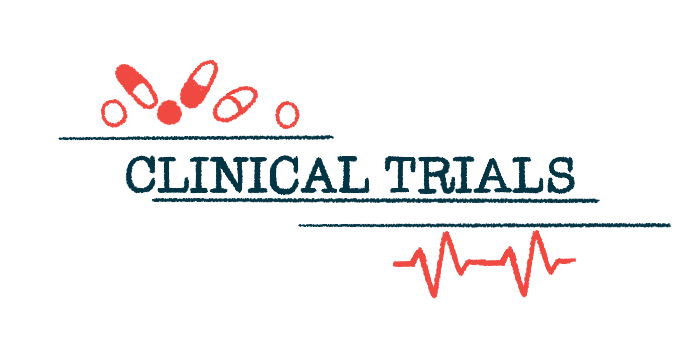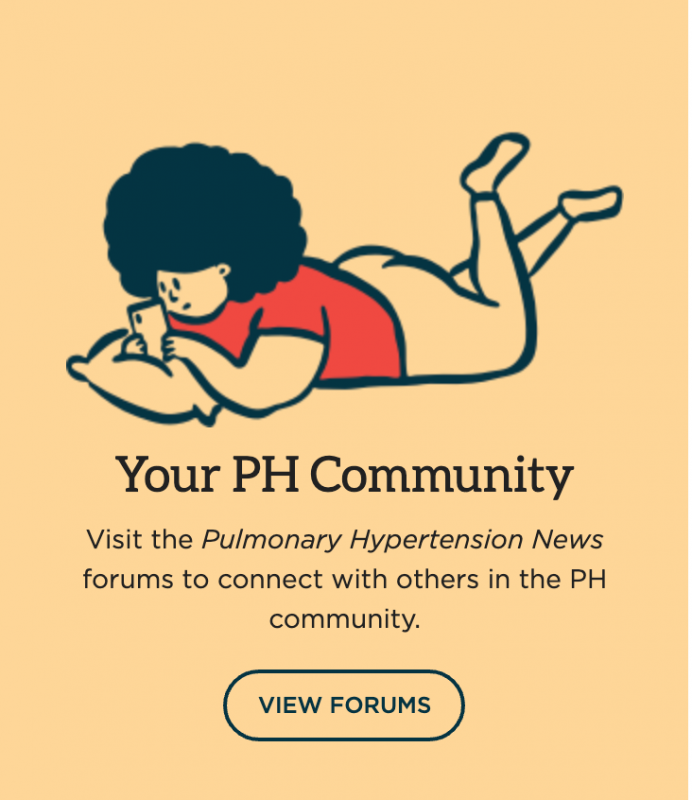Winrevair reduces clinical worsening events in PAH: Trial data
Drug evaluated against placebo in recently diagnosed patients

Winrevair (sotatercept-csrk), when added to standard of care, reduced clinical worsening events by 76% in adults recently diagnosed with pulmonary arterial hypertension (PAH).
That’s according to now-published data from the Phase 3 HYPERION (NCT04811092) clinical trial, which evaluated Merck‘s approved therapy against a placebo in patients who were within one year of their PAH diagnosis. Patients in both groups also received double or triple combination PAH therapy.
“These positive results from HYPERION expand on the body of clinical evidence for [Winrevair], now including PAH patients within their first year of diagnosis, including those earlier in their treatment journey,” Joerg Koglin, MD, PhD, senior vice president, head of general and specialty medicine, global clinical development at Merck Research Laboratories, said in a company press release.
Trial details were described in the study, “Sotatercept for Pulmonary Arterial Hypertension within the First Year after Diagnosis,” published in the New England Journal of Medicine.
Winrevair enhanced heart health in earlier clinical trials
In PAH, the abnormal growth of cells lining the pulmonary arteries, or those that pass through the lungs, causes these vessels to narrow, leading to high blood pressure. As a progressive disease, PAH symptoms, including shortness of breath, fatigue, chest pain, and dizziness, usually worsen with time unless treated.
“PAH is a rare condition that can progress quickly, making diagnosis and early treatment critically important,” said Vallerie McLaughlin, MD, professor of cardiovascular medicine and director of the pulmonary hypertension program at the University of Michigan (UM) in Ann Arbor.
Winrevair, administered via subcutaneous, or under-the-skin, injections, is approved to treat adults with PAH in the U.S., Canada, and the European Union. It’s designed to lower the activity of signaling molecules that drive the abnormal growth of cells lining blood vessels.
In two other Phase 3 clinical trials, STELLAR (NCT04576988) and ZENITH (NCT04896008), Winrevair improved exercise capacity, enhanced heart health, and reduced the risk of death. Participants in both studies had a PAH diagnosis for a mean of about eight years.
HYPERION was a global study that evaluated Winrevair as an add-on therapy in 320 adults with newly diagnosed PAH. Eligible participants had a World Health Organization (WHO) functional class 2 or 3, had received a PAH diagnosis less than one year earlier, had an intermediate or high risk of death, and were receiving double or triple background therapy.
“The patients with PAH enrolled in HYPERION were early in their treatment journey, had [co-existing conditions] and were older, which reflects the type of patients we are diagnosing in a contemporary real-world setting,” said McLaughlin, who is a member of the adult Winrevair steering committee and an investigator in the ZENITH and HYPERION trials.
Fewer patients on Winrevair had worsening events compared to placebo
In addition to standard of care, patients were randomly assigned to receive Winrevair or a placebo every 21 days. The trial’s primary goal focused on the risk of clinical worsening, as measured by a composite of death from any cause, unplanned hospitalization lasting at least 24 hours for worsening of PAH, lung transplant, atrial septostomy, or a decline in exercise capacity. Atrial septostomy is a surgery to create a small hole in the wall between the left and right upper chambers of the heart.
Based on positive results from previous Winrevair trials, Merck ended HYPERION early to allow all participants to join an open-label extension study, SOTERIA (NCT04796337).
During a median follow-up of 13.2 months, HYPERION data showed that more than three times fewer patients in the Winrevair group experienced a clinical worsening event than those in the placebo group (10.6% vs. 36.9%). Overall, Winrevair reduced the risk of clinical worsening events by 76%.
Fewer Winrevair-treated patients experienced a decline in exercise capacity (5% vs. 28.8%) or an unplanned PAH-related hospitalization (1.9% vs. 8.8%). Death from any cause occurred in seven treated patients and six on the placebo (4.4% vs. 3.8%).
An early and sustained treatment benefit was observed within six weeks. Moreover, the treatment effect was consistent across all PAH subgroups, including those with idiopathic PAH (of unknown cause), heritable PAH, connective tissue disease, or drug- or toxin-induced PAH.
The positive effects of adding [Winrevair] to standard therapy in patients with PAH are remarkable. The results from the HYPERION trial underscore the critical importance of early intervention, demonstrating that earlier treatment leads to better outcomes.
In secondary measures, twice as many patients treated with Winrevair met all three criteria of multicomponent improvement (29.4% vs. 14.6%). Such criteria included improvements in the six-minute walking test, levels of NT-proBNP, which is a marker for heart damage, and maintenance or improvement of the WHO functional class.
More Winrevair-treated patients also maintained or achieved a low REVEAL LITE 2 score (60.1% vs. 47.9%. This risk assessment tool is based on vital signs, markers of heart damage, exercise capacity, and kidney function.
Winrevair’s safety profile in HYPERION was generally consistent with that seen in previous studies. The adverse events that were at least 5% higher with Winrevair were nosebleeds (31.9% vs 6.9%%) and spider veins (26.2% vs. 11.2%), or small, widened blood vessels on the skin.
“The positive effects of adding [Winrevair] to standard therapy in patients with PAH are remarkable,” said Victor M. Moles, MD, an associate professor of internal medicine-cardiology at UM Medical School and a HYPERION investigator, in a separate press release. “The results from the HYPERION trial underscore the critical importance of early intervention, demonstrating that earlier treatment leads to better outcomes.”









